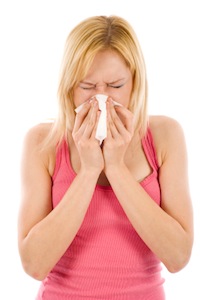It’s finally getting warm enough so that many of us can think about opening our windows to let in the fresh air now and then…but what if that fresh air is bringing in new allergens and stirring up the ones already in the house? There are ways to keep indoor allergens at bay.
The EPA suggests three approaches for relief for the estimated 40 million Americans who have allergies
- Control the source by removing anything that introduces or holds allergens such as pets, leaky faucets, and carpets.
- Ventilate adequately to bring in outdoor air and move indoor pollutants outside. However, if you’re also allergic to pollen or spores, leave your windows closed during allergy season.
- Clean your indoor air.
A few steps allergy suffers can take
- Keep your humidity below 50% to inhibit dust mite and mold growth. Install a whole-home dehumidifier to maintain the desired level.
- Remove as much carpeting as you can. Use hardwood or tile; if you must have carpet use area rugs that can be cleaned or have carpets cleaned regularly by a professional.
- Make bedding allergy-friendly by using allergen-proof mattress and pillow covers and wash and dry bedding on the hot setting every week. Also keep any other fabrics such as curtains and couches or chairs well-vacuumed.
- Have a professional housecleaner take care of your cleaning so you aren’t exposed to allergens that can be stirred up during cleaning.
- Use a furnace filter with the highest MERV rating you can find. The MERV rating measures the efficiency of particle removal, and the higher the number the better. Aim for a MERV 12 filter if you can to reduce up to 95% of allergens. Change it at least every three months, but monthly is best.
- Use mechanical methods of allergen removal and ventilation, such as a whole-home ventilation fan or air cleaners and air purifiers.
- If you can’t open the windows or don’t want to get rid of your carpet or pets, other methods may be best for you They include:
- Air cleaners and purifiers. These capture, kill, and remove bacteria, allergens, and mold on a continual basis and can be up to 99% effective, depending upon the models you use.
- UV germicidal lights. These lights are installed in your air handler and kill mold and bacteria by breaking down their DNA. They also eliminate household odors that are caused by mold and bacteria growing in your air handler.
- Duct cleaning. Ducts in your home can be a source of allergy irritants due to the amount of dust, bacteria, germs, and mold they often contain. Then, when warm or cool air is sent through the ducts into the rest of your home, all the allergens are spread in the air. Clean ducts mean clean air is circulated instead.

